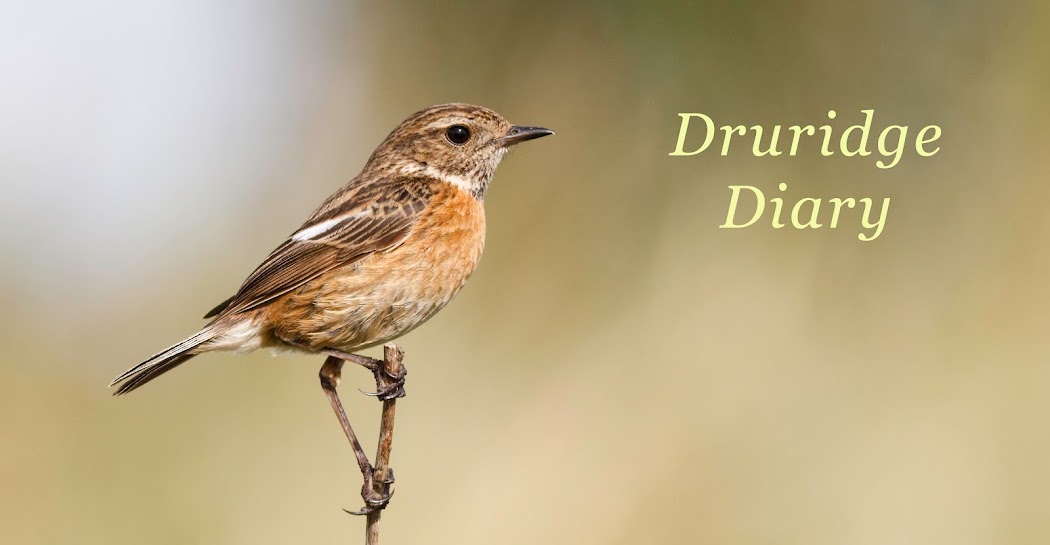A species that has been on and off my Druridge list before is now firmly on it.
No. 223 White Stork!
This afternoon, I had been to the Budge screen and found a pair of
garganey (at last), returning to the car to retrieve my camera, I heard some commotion, looked up and saw a white stork flying no more than 20 metres over my head, it looked like it was coming into land, I ran back to the Budge screen and watched fly low, without much purpose over the big pool, then NW into the farmland inland from East Chevington. I lost it as it cleared the trees heading towards Red Row. Amazing! White Stork is also a British tick and takes my Northumberland list to 301.
I called a few people, but nobody was nearby. A couple who had just seen it at Cresswell Pond joined me in the hide. An unringed white stork was reported from Kibblesworth in Durham this morning - surely the same bird?
I have seen a white stork before at Druridge, in the final year of Alan Tillmouth's patch competition, Mike Henry watched it fly over before dropping into to Warkworth Lane ponds. A few of us went to see it there and found it sporting a plastic ring - the wandering escapee from Harewood House, the lads took great joy in seeing it removed from my list.
A great end to a good weekend, Yesterday, we set the ringing site up. We only ringed until 11am as a luncheon engagement was beckoning, but we did well, catching nine birds. Star of the show was this
lesser whitethroat, a bird I didn't see at Druridge in 2010.
 |
| lesser whitethroat |
 |
| grasshopper warbler |
Also of interest was a sedge warbler control, it's probably only come from Hauxley or Chevington but still interesting.
 |
| controlled sedge warbler |
 |
| willow warbler |
Whilst chewing the fat with John Richardson, I got onto a large bird, flap-flap-gliding behind the trees over the bi pool, I called marsh harrier until it came into view above the trees and it turned into a
short-eared owl, another species I didn't see in 2010.
This afternoon, after the excitement of the stork, Janet and I ringed three stonechat pullis from a nest I've been watching and then we went to check on the grey heron colony. Phil Hanmer joined us, we only managed to ring one young heron, some were still too small and some were to large, legging it across the branches out of my reach.
 |
| Phil with the young grey heron, just before it shit on him |
On the big pool tonight, strangely three female
goosanders have turned up.
I'm off work for the next two weeks so should be bale to boost the year-list a bit.
105 greenshank
106 lesser whitethroat
107 short-eared owl
108 garganey
109 white stork
110 goosander
Patch List 223 white stork






















